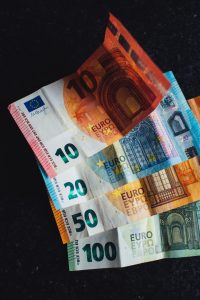Parity in forex refers to the state of equality between two currencies in terms of their value. It is a concept that plays a crucial role in international trade and foreign exchange transactions. In forex, parity is used to determine the exchange rate between two currencies, and it is based on the relative value of each currency.
There are several types of parity in forex, including purchasing power parity (PPP), interest rate parity (IRP), and international Fisher effect (IFE). These concepts are used to explain the relationship between the exchange rate and various economic variables such as inflation rates, interest rates, and economic growth.
Purchasing Power Parity (PPP)
Purchasing power parity (PPP) is a theory that suggests that the exchange rate between two currencies should be equal to the ratio of the price levels of a basket of goods and services in each country. In other words, PPP states that the cost of living in one country should be the same as the cost of living in another country when measured in a common currency.
For example, if the price of a basket of goods in the United States is $100 and the price of the same basket of goods in Japan is ¥10,000, then the exchange rate between the US dollar and the Japanese yen should be 1:100. This means that one US dollar should be equal to 100 Japanese yen.
Interest Rate Parity (IRP)
Interest rate parity (IRP) is a theory that suggests that the difference in interest rates between two countries should be equal to the difference in their exchange rates. This theory states that the exchange rate between two currencies should adjust to reflect the difference in interest rates between the two countries.
For example, if the interest rate in the United States is 2% and the interest rate in Japan is 0.5%, then the exchange rate between the US dollar and the Japanese yen should adjust to reflect this difference. In this case, the US dollar should appreciate against the Japanese yen to compensate for the higher interest rate in the United States.
International Fisher Effect (IFE)
The international Fisher effect (IFE) is a theory that suggests that the difference in nominal interest rates between two countries should be equal to the difference in their expected inflation rates. This theory states that the exchange rate between two currencies should adjust to reflect the difference in their expected inflation rates.
For example, if the nominal interest rate in the United States is 5% and the expected inflation rate is 2%, and the nominal interest rate in Japan is 1% and the expected inflation rate is 0.5%, then the exchange rate between the US dollar and the Japanese yen should adjust to reflect this difference. In this case, the US dollar should appreciate against the Japanese yen to compensate for the higher expected inflation rate in the United States.
Conclusion
Parity in forex is an essential concept that plays a crucial role in determining the exchange rate between two currencies. It is based on various economic variables such as inflation rates, interest rates, and economic growth. There are several types of parity in forex, including purchasing power parity, interest rate parity, and the international Fisher effect. Understanding these concepts is essential for traders and investors who want to make informed decisions in the forex market.






